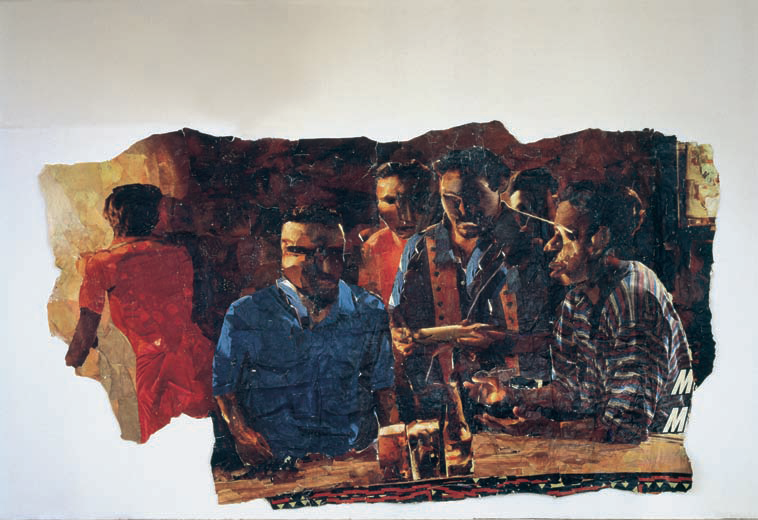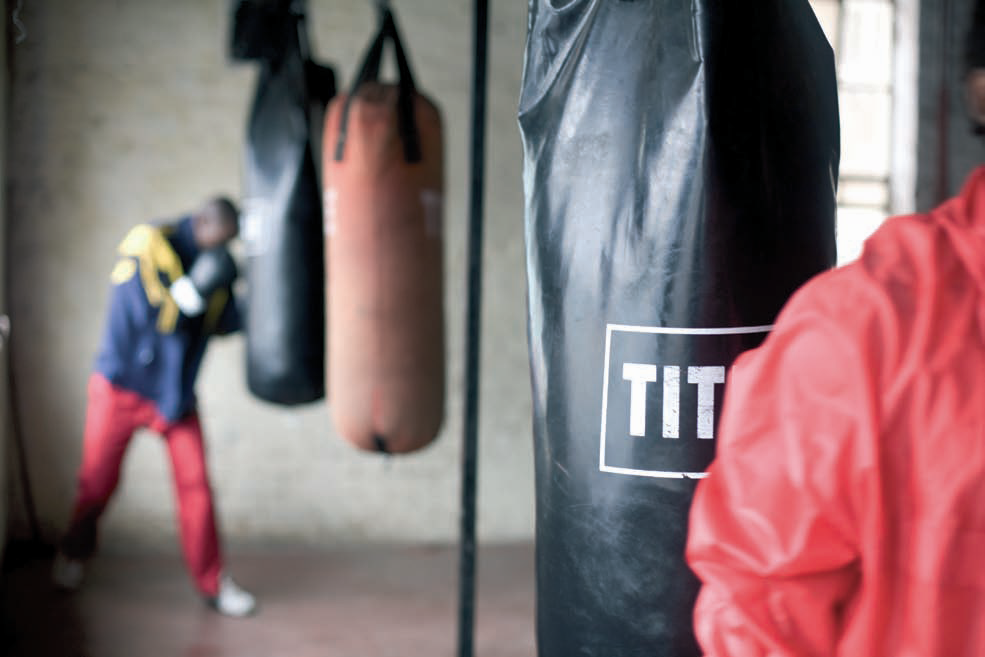Shebeens, or informal pubs, arose in the black townships as illicit drinking spots that operated in backyards, under the government’s radar. Immortalized in songs like “Back of the Moon,” made famous by singer Miriam Makeba in the 1959 musical production King Kong, shebeens were lively centers of keen political debate, great jazz, and good conversation. The police raided often: In the townships only bleak government-approved beer halls were licensed to sell liquor. Nights in the shebeens were much more fun, and heated discussions could go on for hours. For artist Kay Hassan, it was at the shebeen that his political consciousness awoke.
It was therefore appropriate that when he put together an installation for the 2nd Johannesburg Biennale in 1997, Hassan re-created this seminal space to provide a relaxation spot for Biennale visitors. Worn but comfortable sofas offered seating, the smell of stale beer hung in the air, and soon empties began to fill the corners of the space. Against the corrugated iron walls—a typical feature of informal housing—Hassan projected images of lively township gatherings.
For Hassan the shebeen is as much an ideological as a physical space; in the apartheid years it provided a crucial reprieve from daily repressions. Born in the Johannesburg township of Alexandra in 1956, Hassan often addresses the theme of black urban culture’s resilience against the tyranny of the former apartheid regime. He looks at the evolution of urban spaces in South Africa, how people interact with their environment, and what the effects of this environment are upon the individual. Cities seem to promise quick money, but just as often they can lead to social alienation, poverty, and problems of drug and drink abuse.
Shebeen (1998), showing a group of men in a drinking spot, employs a method Hassan has made uniquely his own. When in Paris in 1986 studying printmaking, Hassan realized the potential of billboards as material to record of the life of the city. Back in Johannesburg, he started to collect posters from the streets of Johannesburg, tearing and cutting them up to use as his palette for his large paper collages. Through the collection process, Hassan gets to spend time outside his studio, observing people at work and taking in the life of the streets.
Hassan was awarded the DaimlerChrysler Award for Contemporary Art in 2000, and in 2008 he received the rare accolade of a mid-career retrospective at the Johannesburg Art Gallery, appropriately named Urbanisation. In The Boxers (2008), a new installation on view at the 2008 show, old army carry bags are transformed into punching bags and juxtaposed with a video projection of boxers sparring at a gym in Hillbrow, a high-density, tough Johannesburg neighborhood.
As in his other complex, vibrant work, Hassan explores both public and private aspects of urban life.

Shebeen 1998
Paper collage
320 x 560 cm
Image courtesy of the Museum Bochum
Photographer: Olaf Bergman
© Kay Hassan

Shebeen 1997
Table, chairs, sound, slide projection
Dimensions variable
Installation detail at the 2nd
Johannesburg Biennale
© Kay Hassan

The Boxers 2008
Punching bags and video
Installation detail
Image courtesy of the artist and the Johannesburg Art Gallery
© Kay Hassan